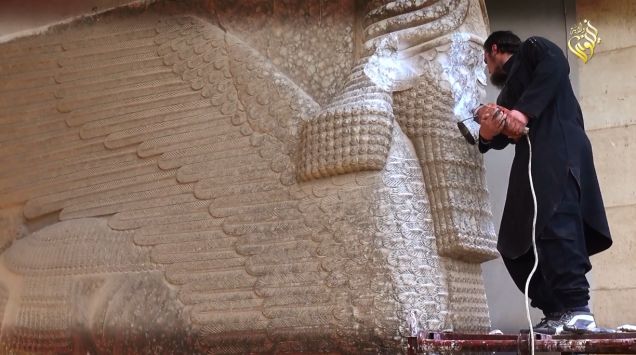Project Mosul Aims To Resurrect The Artifacts Destroyed By ISIS
In what could be one of the most interesting and important uses of 3D scanning to come along in a long while, the Initial Training Network for Digital Cultural Heritage is working to collect photographs of the destroyed statues that can be used to piece together 3D models of the destroyed artifacts. With enough visual data, the group should be able to recreate the objects to scale and undo, in some way, the damage wrought by ISIS at the Mosul Museum.
The plea is simple: “We are looking for volunteers to help virtually restore the Mosul Museum,” write the volunteers. “This includes finding photos, processing data, contributing to the website and generally helping out with organising the effort to identify the museum artefacts.” You can email them here.
The project is being organized by Matthew Vincent, Marinos Ioannides, and Chance M. Coughenour and is looking for folks to help with 3D modeling and even website maintenance. They write:
The video circulated around the 26th of February, 2015 shows the horrific destruction of the Mosul Museum by ISIS Fighters. This is not the first time this museum has suffered during times of conflict, but the destruction is nearly absolute, and this time we can respond through the application of digital technologies to cultural heritage.We assume that much of the museum’s contents were looted, and anything small enough to be easily removed will be appearing soon on the antiquities market. Anything too large to remove for sale, appears to have met a violent end at the hand of ISIS extremists. In both cases, it is possible to virtually recreate the lost items through the application of photogrammetry and crowdsourcing. Given enough photographs, digital or scans of analogues, it is possible to reconstruct the artefacts and create digital surrogates of those artefacts. This provides two immediate benefits: helping to identify looted items and recreating destroyed items.We propose to coordinate a volunteer effort of experts and amateurs in the crowdsourcing of the necessary digital imagery and the creation of digital surrogates for the artefacts in the museum. We would like to work with the local management of the Mosul Museum as much as possible, as well as with experts familiar with the collection and material. All data generated from this project will be freely available to the public.
This use of 3D printing, scanning, and digital archeology is actually quite stirring: it can resurrect history that has been destroyed by ignorance in ways unheard of even a few years ago. I’ve reached out to the team and hopefully they can share some of the work over the next few months – like this recreation of the Lion of Mosul, nearly ready for its 3D printed debut.
The Lion of Mosul
by neshmi
on Sketchfab
via 3DPrint
